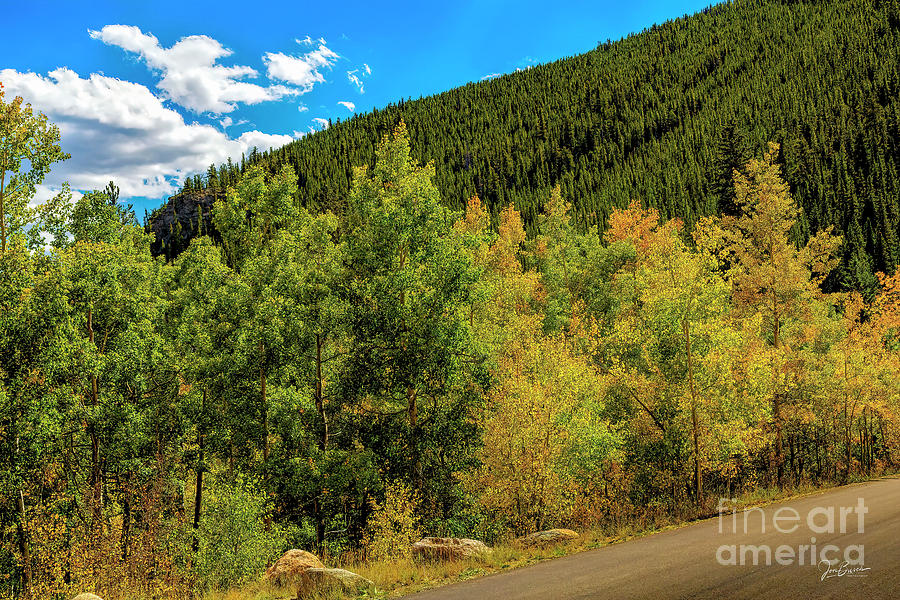
A Progression of Color

by Jon Burch Photography
Title
A Progression of Color
Artist
Jon Burch Photography
Medium
Photograph - Digital Capture & Enhancement
Description
A progression of color along the side of the now paved Guanella Pass road in the central Rocky Mountains of Colorado.
When leaves appear green, it is because they contain an abundance of chlorophyll. There is so much chlorophyll in an active leaf that the green masks other pigment colors. Light regulates chlorophyll production, so as autumn days grow shorter, less chlorophyll is produced. The decomposition rate of chlorophyll remains constant, so the green color starts to fade from leaves.
At the same time, surging sugar concentrations cause increased production of anthocyanin pigments. Leaves containing primarily anthocyanins appear red. Carotenoids are another class of pigments found in some leaves. The carotenoid production is not dependent on light, so levels aren't diminished by shortened days. Carotenoids can be orange, yellow, or red, but most of these pigments found in leaves are yellow. Leaves with good amounts of both anthocyanins and carotenoids will appear orange.
Leaves with carotenoids but little or no anthocyanin will appear yellow. In the absence of these pigments, other plant chemicals also can affect leaf color including tannins, which are responsible for the brownish color of some oak leaves.
Temperature affects the rate of chemical reactions, including those in leaves, and plays an important part in leaf color. However, it's mainly light levels that are responsible for fall foliage colors. Sunny autumn days are needed for the brightest color displays, since anthocyanins require light. Overcast days will lead to more yellows and browns
Image copyright 2018 Jon Burch Photography
Uploaded
September 27th, 2018
Statistics
Viewed 100 Times - Last Visitor from New York, NY on 04/17/2024 at 11:07 PM
Embed
Share
Sales Sheet



























































